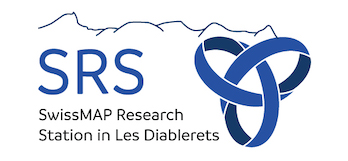1) Jean-Michel Bismut (Université Paris-Saclay, France):
Quillen metrics and applications
Given a compact manifold X and a holomorphic vector bundle E on X, one can define the Dolbeault cohomology groups H = H·(X,E) and consider the determinant line λ = det H. Given Hermitian metrics on TX and E, there is canonical Hermitian metric on λ, the Quillen metric, that is constructed using the corresponding holomorphic Ray-Singer analytic torsion, a spectral invariant of the associated Hodge Laplacian, which extends in arbitrary dimensions the idea of the determinant of the Laplacian.
The Quillen metrics have a number of remarkable properties. They are compatible with corresponding constructions in algebraic geometry. Under a suitable Kähler condition, the curvature of the Quillen metric can be computed locally, in terms of Chern-Weil data. The Polyakov anomaly formulas are a special case of this curvature theorem. More generally, when one compares the Quillen metrics on canonically isomorphic determinant lines, the corresponding ratio can be evaluated by an explicit local formula, involving Bott-Chern classes, instead of the more familiar Chern-Simons classes.
In the course, I will explain the basic known results on Quillen metrics, sketch some of the proofs, and explain some applications.
[slides]
2) Dan Halpern-Leistner (Cornell University, USA):
Introduction to Θ-stratifications of moduli stacks
The moduli of vector bundles on a curve has a beautiful structure called the Harder-Narasimhan stratification, which has many applications to studying the geometry of this classical moduli problem. The theory of Θ-stratifications provides an intrinsic description of this stratification that generalizes to other moduli problems.
I will give an overview of the main results in the theory of Θ-stratifications. Then I will explain how to apply these general results to the moduli stack of gauged maps from a curve to a linear representation. Ultimately, this leads to an explicit formula for the K-theoretic gauged Gromov-Witten invariants, in arbitrary genus, of a linear representation (or a complete intersection therein).
3) Justin Hilburn (Perimeter Institute, Canada):
The 3d A-model: generalized Seiberg-Witten equations, vortices and monopoles



